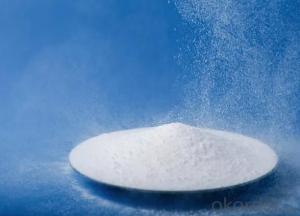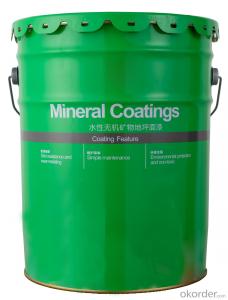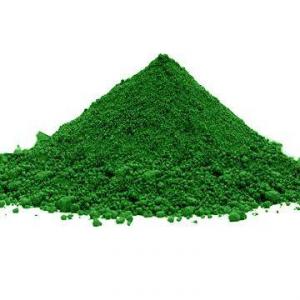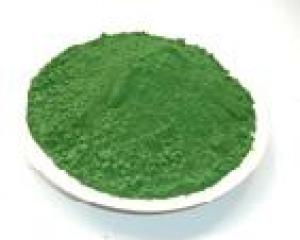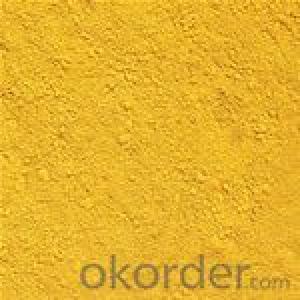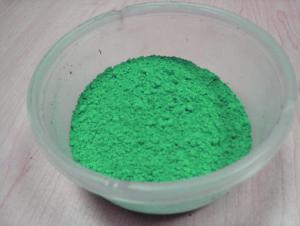Ultramarine Blue Best Quality
- Loading Port:
- Shanghai Port
- Payment Terms:
- TT or LC
- Min Order Qty:
- 1 Metric Ton m.t.
- Supply Capability:
- 8000MT Per Year m.t./month
OKorder Service Pledge
OKorder Financial Service
You Might Also Like
Products Details Of Ultramaine Blue :
Edition | 2012-07-29 | |
Product type | Blue Pigment | |
Product Form | Power | |
Chemotaxonomy | Na6Al4Si6S4O20 | |
Color Index | Color Blue 29:77007 | |
CAS No. | 57455-37-5 | |
Color Value&Tint Strength Refer Standard:DIN 55986 (1981) Use 1:2 Tio2 dilution and tinting strength parameter matching color value | ||
MIN | MAX | |
△L* | -0.7 | 0.7 |
△a* | -0.7 | 0.7 |
△b* | -0.7 | 0.7 |
△E*ab | 1.0 | |
Relative tinting strength % | 95 | 105 |
Package of Ultramaine Blue :
25 KG/ Kraft bag , 20 MT / 20 FCL .
Suggest Using of Ultramaine Blue :
Widely used in paint, ink, paper making, printing and dyeing textile, culture and education,
architecture, rubber, plastic, cosmetics, food and other industries and can be used as colorant,
brightener and color matching agent, etc.
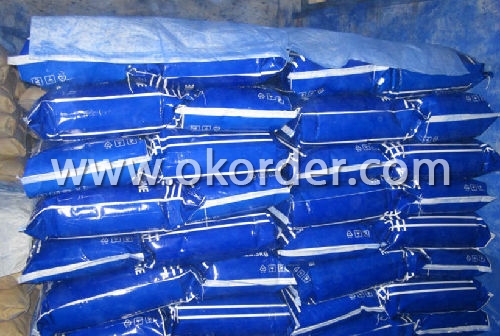
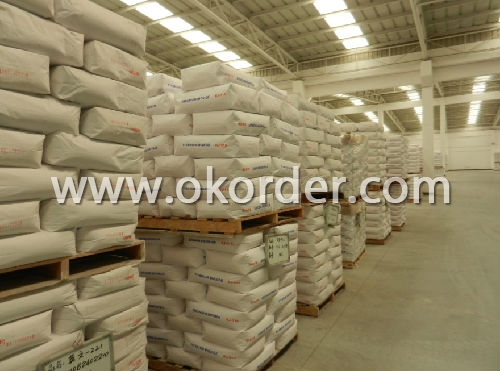
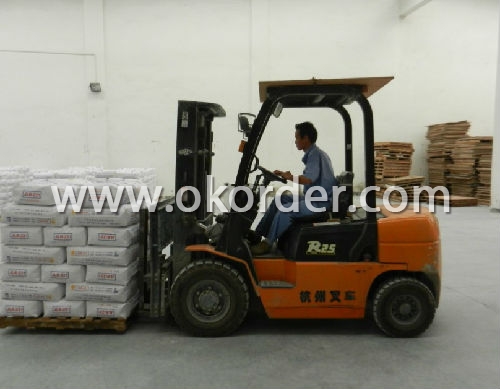
- Q:Can you take any powder, grind it finely, and mix linseed oil into it to make oil paints to make paint? Or do paint pigments have to have special characteristics? Thanks!!
- You okorder /article/pigment...
- Q:what are accessory pigments?
- Accessory pigments are light-absorbing compounds, found in photosynthetic organisms, that work in conjunction with chlorophyll a. They include other forms of this pigment, such as chlorophyll b in green algal and higher plant , while other algae may contain chlorophyll c or d. In addition, there are many non-chlorophyll accessory pigments, such as carotenoids or phycobiliproteins which also absorb light and transfer that light energy to photosystem chlorophyll. Some of these accessory pigments, particularly the carotenoids, also serve to absorb and dissipate excess light energy, or work as antioxidants. The different chlorophyll and non-chlorophyll pigments associated with the photosystems all have different absorption spectra, either because the spectra of the different chlorophyll pigments are modified by their local protein environment, or because the accessory pigments have intrinsic structural differences. The result is that, in vivo a composite absorption spectrum of all these pigments is broadened and flattened such that a wider range of visible and infrared radiation is absorbed by plants and algae. Most photosynthetic organisms do not absorb green light well, thus most remaining light under leaf canopies in forests or under water with abundant plankton is green, a spectral effect called the green window. Organisms such as some cyanobacteria and red algae contain accessory phycobiliproteins that absorb green light reaching these habitats. For more kindly click on the links below --- en.wikipedia.org/wiki/Accessory_p... en.wikipedia.org/wiki/Photosynthe...
- Q:We see pigments everywhere in products. They make a variety of things we see today. Where does it come from? Do they actually take a red rose pedal, grind the color and designate it as the color red?
- Pigments come from many sources, and often the name of the color indicates the source. For example, lead white, titanium white and zinc white are lead, titanium and zinc oxides. Cobalt blue is a compound of cobalt. Many pigments are found in nature from minerals, plants and insects. Many more are produced in the laboratory and have chemical names such as the analine dyes.
- Q:I was intrested in buying some pigments on ebay but they dont say the name they just say these nubers #68 #69 #93 do u no what pigment name they are u could serch it that might help thank you
- All mac pigments have a specific name and i had researched a bit and seen videos of people comparing the fake to the authentic pigments. I've seen fakes with a no. on it. Stay away from this seller and i strongly suggest buy it from a MAC store as most brushes, pigments, eyeshadows are fake on Ebay.
- Q:Why does a plant use several pigments instead of one or two?Why are plant leaves green?
- Pigments are a way for a plant to absorb the sun's energy in the form of light (photosynthesis). The different colored pigments absorb different wavelengths of light and pass it on directly to the plant to make energy, except for one class called the carotenoids, which much pass it on the the chlorophyll before anything happens The plants leaves are green because they absorb all the other wavelengthss (red, blue, oragne etc) except the green one, and the reflection of the green is what our eyes see.
- Q:I am 33 years old and have pigment dispersion syndrome. My new doctor prescribed laser treatment, to prevent eye damage and potential sight loss. A previous doctor said to try drops, but only if my eye pressure became high-risk. Has anyone in Yahoo's network been in my situation and if so, what did you do?
- I managed to lighten my skin by four shades in two weeks using only natural ingredients. Have a nice day
- Q:I need to know the classes and sub classes of pigments classification
- organic pigment and inorganic pigment
- Q:what the book says is that they 'harvest additional wavelengths.' i don't know what this means to how its an advantage.. can somone explain?
- in leaves accesory pigments are important because chlorophyll the main plants pigment are easilly broken down by low temperature. if chlorophyll, the green pigmnet is broken down accesory pigments give the leaves its color, usually orange, yellow
- Q:explain how the pigments in colored objects such as clothes differ from plant pigments
- Green pigments absorb light in the red and blue parts of the spectrum and reflect the green back to our eyes. The major functional difference between chlorophyll and say jade green is that only the chlorophyll in living systems can transfer the absorbed light energy and the excited electron to another molecule, thus trapping it. In biology, pigment is any material resulting in color in plant or animal cells which is the result of selective absorption. Some biological material has so-called structural color, which is the result of selective reflection or iridescence, usually done with multilayer structures. Unlike structural color, pigment color is the same for all viewing angles. Nearly all types of cells, such as skin, eyes, fur and hair contain pigment. Butterfly wings typically contain structural color, although many of them contain pigment as well. Creatures that have deficient pigmentation are called albinos. In the coloring of paint, ink, plastic, fabric and other material, a pigment is a dry colorant, usually an insoluble powder. There are both natural and synthetic pigments, both organic and inorganic ones. Pigments work by selectively absorbing some parts of the visible spectrum (see light) whilst reflecting others. A distinction is usually made between a pigment, which is insoluble, and a dye, which is either a liquid, or is soluble. There is no well-defined dividing line between pigments and dyes, however, and some coloring agents are used as both pigments and dyes. In some cases, a pigment will be made by precipitating a soluble dye with a metallic salt. The resulting pigment is called a lake.
- Q:If you could explain it to me I would be very happy!
- Accessory pigments are light-absorbing compounds, found in photosynthetic organisms, that work in conjuction with chlorophyll a. They include other forms of this pigment, such as chlorophyll b in green algal and higher plant antennae, while other algae may contain chlorophyll c or d. In addition, there are many non-chlorophyll accessory pigments, such as carotenoids or phycobiliproteins which also absorb light and transfer that light energy to photosystem chlorophylls. Some of these accessory pigments, particularly the carotenoids, also serve to absorb and dissipate excess light energy, or work as antioxidants.
1. Manufacturer Overview |
|
|---|---|
| Location | Hunan, China |
| Year Established | 1998 |
| Annual Output Value | Above US$ 30 Million |
| Main Markets | 20.00% North America 15.00% South America 15.00% Eastern Europe 10.00% Southeast Asia 10.00% Northern Europe 10.00% South Asia 10.00% Western Europe 5.00% Africa 5.00% Mid East |
| Company Certifications | ISO9001:2000; |
2. Manufacturer Certificates |
|
|---|---|
| a) Certification Name | |
| Range | |
| Reference | |
| Validity Period | |
3. Manufacturer Capability |
|
|---|---|
| a)Trade Capacity | |
| Nearest Port | Shanghai Port |
| Export Percentage | 41% - 50% |
| No.of Employees in Trade Department | 6-10 People |
| Language Spoken: | English; Chinese; |
| b)Factory Information | |
| Factory Size: | Above 10,000 square meters |
| No. of Production Lines | Above 10 |
| Contract Manufacturing | Design Service Offered; Buyer Label Offered |
| Product Price Range | High; Average |
Send your message to us
Ultramarine Blue Best Quality
- Loading Port:
- Shanghai Port
- Payment Terms:
- TT or LC
- Min Order Qty:
- 1 Metric Ton m.t.
- Supply Capability:
- 8000MT Per Year m.t./month
OKorder Service Pledge
OKorder Financial Service
Similar products
New products
Hot products
Related keywords













